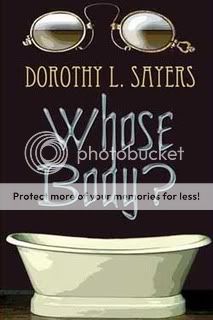Originally published in May 2005, on my original 52 Books blog.
This is the first of Dorothy L. Sayers’ Lord Peter Wimsey mysteries, written during the Golden Era of crime fiction, an era that produced many authors who are still in print and considered to be classics. They include Sayers, Agatha Christie, S.S. Van Dine, Ellery Queen and John Dickson Carr, to name a few of the biggest.
The story tells of how Lord Peter Wimsey gets involved in two criminal cases. The first is the mysterious appearance of a naked corpse in the bathtub of a respectable architect, and the second the disappearance of a rich businessman who had a strong resemblance to the dead man. Aided by his valet, Bunter, and his detective friend, Parker, Wimsey uncovers a clever and diabolical revenge scheme and a very ingenious method of corpse disposal, with a few red herrings thrown in to confuse both Wimsey and the reader.
Wimsey has, when the story begins, solved at least one case of theft, and other criminal investigations of his are alluded to, and characters are spoken of as if the reader were expected to know them. Either it is a trick of Sayers’ to make the reader feel at home with the characters right away and make away with long “get to know them” passages, or the novel is the continuation of short stories about Wimsey. Either way, it does not feel like the first thing she ever wrote about him, and the aura of familiarity makes one feel as if the book has been plucked from the middle of a series, but without the reader having really missed anything.
I liked this book much better than the previous Wimsey mystery I read, Five Red Herrings. That particular story was much too involved and mathematical for my taste, but this one is quite different, and I’m glad I didn’t let my dislike of the other book prevent me from reading this one. 4 stars.

Comments